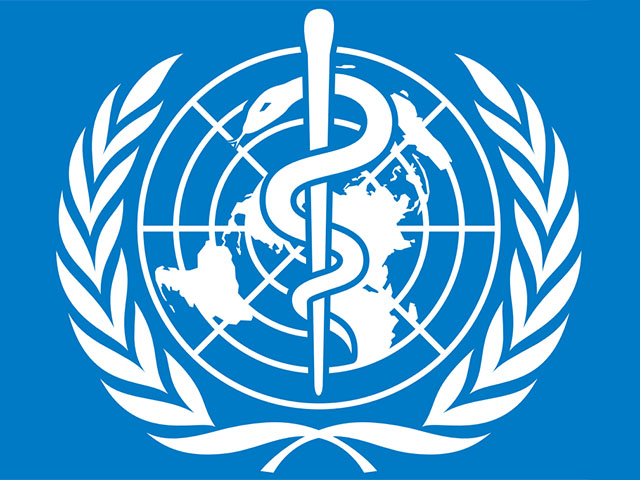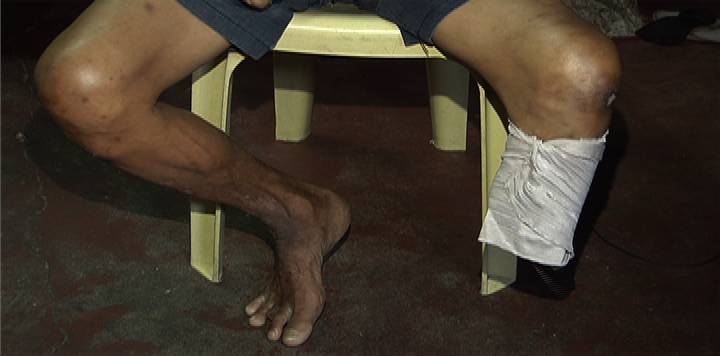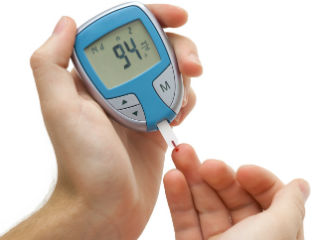What you need to know about diabetes
Actress and comedian Joy Viado is scheduled to undergo an operation at the Chinese General Hospital in a bid to save her foot from amputation due to diabetes complications.
Diabetes is one of the world's most prevalent chronic diseases, with the numbers of those diagnosed with it steadily rising. In the Philippines, nearly one in 10 people are diabetic or prediabetic. But many people are still not informed enough about the disease and how to avoid it. Here's what you should know.
What is diabetes? Diabetes is a chronic disease that occurs when not enough insulin is produced by the pancreas, or when the body cannot effectively use the insulin produced by the pancreas. A common result of this is raised blood sugar, which over time can lead to serious damage of the body's nervous and circulatory systems, among others.
Diabetes is a chronic disease that occurs when not enough insulin is produced by the pancreas, or when the body cannot effectively use the insulin produced by the pancreas. A common result of this is raised blood sugar, which over time can lead to serious damage of the body's nervous and circulatory systems, among others.
According to the World Health Organization, Type 1 diabetes is characterized by a lack of insulin production.
Type 2 diabetes, which usually develops in adulthood, is related to obesity, physical inactivity and unhealthy diets. It is characterized by the body's inability to effectively use the insulin produced by the pancreas. About 90% of all diabetes cases worldwide are Type 2 diabetes.
A third type, known as gestational diabetes, is high blood sugar that occurs during pregnancy. Women with gestational diabetes are more at risk of developing Type 2 diabetes in the future. They are also at risk of complications during pregnancy.
According to a 2014 WHO report:
- 347 million people worldwide have diabetes
- more than 80% of these live in low- and middle-income countries
- In 2012 diabetes was the direct cause of 1.5 million deaths
- diabetes deaths is expected to double from 2005 to 2030
- diabetes is predicted to become the 7th leading cause of death in the world by the year 2030
- cardiovascular disease is responsible for between 50% and 80% of deaths in people with diabetes
Common symptoms
The American Diabetes Association lists common symptoms of diabetes:
- Urinating often
- Feeling very thirsty
- Feeling very hungry, even though you are eating
- Extreme fatigue
- Blurry vision
- Cuts/bruises that are slow to heal
- Weight loss, even though you are eating more (Type 1 diabetes)
- Tingling, pain, or numbness in the hands and feet (Type 2 diabetes)
Having any of these symptoms does not necessarily mean you have diabetes, but on the other hand some symptoms are so mild that people with Type 2 diabetes do not notice them. Check with your doctor if you need to get tested.
Why foot amputation?
 What do the feet have to do with diabetes? The answer is diabetic neuropathy, or nerve damage.
What do the feet have to do with diabetes? The answer is diabetic neuropathy, or nerve damage.According to the UK's National Health Service, diabetes can damage the nerves and blood vesels, particularly those in the feet.
"Nerve damage can reduce the sensation in your feet, meaning you can injure your feet and develop a foot ulcer without realizing it," explains the NHS on its website. "Blood vessel damage can also reduce the blood supply to your feet, meaning ulcers take longer to heal and are more likely to become infected.
"These infections can spread rapidly through the foot and up into the leg, and an amputation may be necessary to prevent it spreading further."
Blindness
The effect of diabetes on the blood vessels can also endanger the eye. According to the National Eye Institute (NEI) of the US government's National Institutes of Health (NIH), diabetic retinopathy—the most common diabetes-related eye disease—is caused by changes of the blood vessels on the retina. The abnormal blood vessels can leak blood into the eye, resulting in blurred vision. It usually affects both eyes and gradually leads to vision loss.
Diabetes in the Philippines
In 2012, the Philippine Council for Research and Development Library found that one of five Filipino adults, or approximately 11 million people—9.7% of the adult population—had diabetes or pre-diabetes, up from one of every 25 Filipinos (or 4%) in 2005.
In 2013, a panel of doctors from the Philippine Society of Endocrinology and Metabolism (PSEM) pointed out some facts about the disease:
 1. Get tested, particularly if you are at least 40 years old. According to a 2008 study, the biggest jump in the prevalence of diabetes happens between ages 40 and 49. Even those who are not overwight should check with their doctor if they need to get tested for diabetes.
1. Get tested, particularly if you are at least 40 years old. According to a 2008 study, the biggest jump in the prevalence of diabetes happens between ages 40 and 49. Even those who are not overwight should check with their doctor if they need to get tested for diabetes.If your blood sugar is higher than normal but not yet within diabetes range, then you might have pre-diabetes. This has a 20% to 50% chance of developing into Type 2 diabetes in the next 10 years unless it is addressed with weight loss through proper nutrition and exercise.
2. Lose weight. Losing 5% to 10% of body weight—coupled with at least 30 minutes of moderate physical activity a day—produces a 58% reduction in the incidence of diabetes. Doctors recommend moderate physical activity for 150 minutes a week, spread to at least 3 days weekly. Twice weekly resistance training is also recommended for adults with type 2 diabetes as long as they can do these types of exercises safely.
3. Eat more vegetables and high-fiber food. Increasing your intake of vegetables and other high-fiber foods can also prevent diabetes. Fruit must be consumed in moderation as many contain sumple sugars. Use less fat when cooking and avoid fatty, fried or oily foods, as well as food that are high in saturated fats and calories.
According to PSEM, the calorie count in your daily diet must be distributed as follows: 30% from fat (of which only 7% should come from saturated fat), 20% protein, and 50% complex carbohydrates, for energy.
Medical guidelines
In their Philippine Clinical Practice Guidelines on the Diagnosis and Screening of Diabetes, the PSEM and other diabetes associations listed risk factors for developing diabetes. See if any of these apply to you:
-
 you have a body-mass index of 23 or higher (go here to calculate your BMI)
you have a body-mass index of 23 or higher (go here to calculate your BMI) - you live a sedentary lifestyle
- you often have high blood pressure (140/90 or higher)
- you have a history of pre-diabetes, impaired glucose tolerance (IGT) or impaired fasting glucose (IFG)
- you have a first-degree relative with Type 2 diabetes
- you have Polycystic Ovary Syndrome (PCOS)
- you have a history of gestational diabetes, giving birth to a baby weighing 8 pounds or more
- you have a diagnosis or history of vascular diseases
- you have schizophrenia
- you have a waist circumference of 90 cm (35 inches) or more if you are male and 80 cm (31 inches) or more if you are female
- you have a waist-to-hip ratio of 1 or more if you are male and 0.85 or more if you are female
- you have a HDL level of less than 35 mg/dL and a triglyceride level of more than 250 mg/dL
- you have acanthosis nigricans, or dark pigmentation in areas like the neck, armpit or groin.




